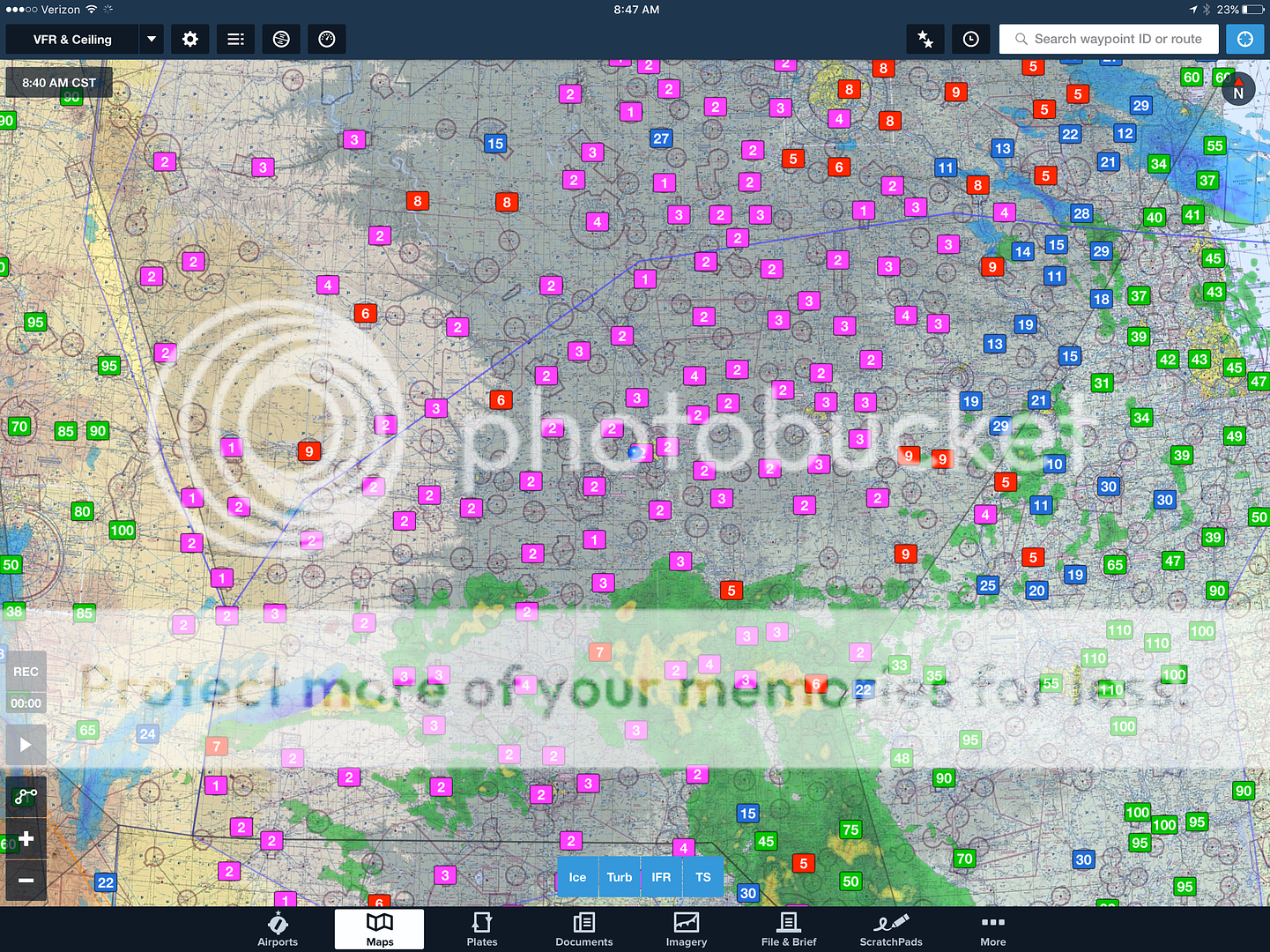tuwood
Pre-takeoff checklist
I apologize in advance for a dumb newbie question, but my wife asked me this morning and I wasn't 100% sure of the answer. I'm only a week after my discovery flight, so I haven't officially started my PPL lessons yet.
This morning was very foggy and overcast in Omaha and looking at the weather for the nearest airport to my house (KMLE) it shows 1/4SM FG OVC002 which I believe means 1/4 mile visibility overcast at 200' AGL and foggy.
My wife asked me the question of what would I do if I were flying and the weather changed to foggy like this and my obvious response was that I wouldn't be flying. She then pressed about what if I was already flying and it changed unexpectedly, to which I responded that I'd divert to an alternate runway.
I then look at Foreflight, which I'm still trying to learn and there isn't a runway within 150 miles that doesn't have the virtually the same conditions.
So, my question for you guys in the real world. Is this the type of thing that a pilot is relying on weather forecasts and such to ensure that you don't get ever get into a VFR to IMC situation with weather like this and if you do you're straight up screwed. (pull the CAPS chute ) Or is it something that rolls in somewhat predictable where you can find an alternate landing location to the east (or whatever) for a while before the weather rolls across the land like it is this morning.
) Or is it something that rolls in somewhat predictable where you can find an alternate landing location to the east (or whatever) for a while before the weather rolls across the land like it is this morning.
To add some more context I'm still building my wife's confidence towards GA as I move forward with my PPL and there was a poor guy that appears to have (my guess) gotten into a VFR to IMC situation just north of us in Nebraska a couple days ago and sadly perished. This kind of stuff isn't helping my cause.
Here's a picture out the back window this morning and the Foreflight map showing the ceiling:


This morning was very foggy and overcast in Omaha and looking at the weather for the nearest airport to my house (KMLE) it shows 1/4SM FG OVC002 which I believe means 1/4 mile visibility overcast at 200' AGL and foggy.
My wife asked me the question of what would I do if I were flying and the weather changed to foggy like this and my obvious response was that I wouldn't be flying. She then pressed about what if I was already flying and it changed unexpectedly, to which I responded that I'd divert to an alternate runway.
I then look at Foreflight, which I'm still trying to learn and there isn't a runway within 150 miles that doesn't have the virtually the same conditions.

So, my question for you guys in the real world. Is this the type of thing that a pilot is relying on weather forecasts and such to ensure that you don't get ever get into a VFR to IMC situation with weather like this and if you do you're straight up screwed. (pull the CAPS chute
 ) Or is it something that rolls in somewhat predictable where you can find an alternate landing location to the east (or whatever) for a while before the weather rolls across the land like it is this morning.
) Or is it something that rolls in somewhat predictable where you can find an alternate landing location to the east (or whatever) for a while before the weather rolls across the land like it is this morning.To add some more context I'm still building my wife's confidence towards GA as I move forward with my PPL and there was a poor guy that appears to have (my guess) gotten into a VFR to IMC situation just north of us in Nebraska a couple days ago and sadly perished. This kind of stuff isn't helping my cause.
Here's a picture out the back window this morning and the Foreflight map showing the ceiling:



